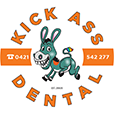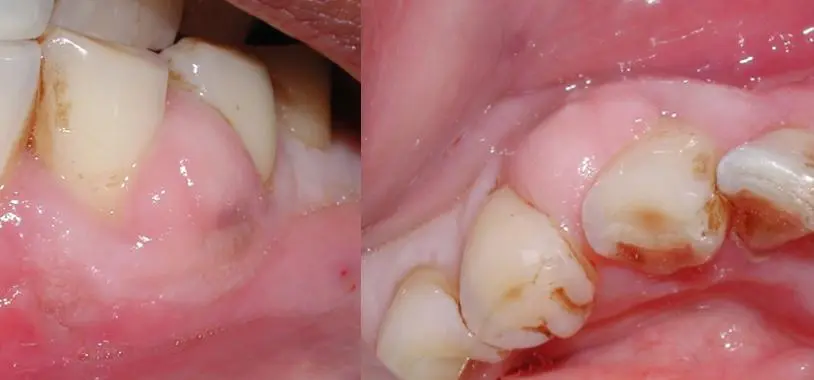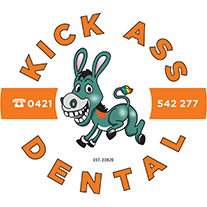How to Get Rid of an Infection in Your Teeth
Introduction
Dealing with a dental infection can be an uncomfortable and concerning experience. Tooth infections, also known as dental abscesses, occur when harmful bacteria invade the pulp of a tooth, leading to pain, swelling, and potential complications if left untreated. If you suspect you have a tooth infection, it’s crucial to take action promptly to prevent further damage and alleviate the discomfort. In this article, we will explore some effective steps to help you get rid of an infection in your teeth.
1. Identify the Symptoms
Signs of a Tooth Infection
The first step in tackling a dental infection is to identify its symptoms. Common signs of a tooth infection include:
Intense toothache: A persistent, throbbing pain in the affected tooth is a key indicator of an infection.
Sensitivity: Increased sensitivity to hot or cold foods and beverages.
Swelling: The area around the infected tooth may become swollen and tender to touch.
Fever: In some cases, a tooth infection can lead to a mild fever.
Foul taste or odor: An unpleasant taste or smell in your mouth may indicate an abscess.
If you experience any of these symptoms, it’s crucial to seek dental care as soon as possible to prevent the infection from spreading and causing further complications.
2. Consult a Dentist
Importance of Professional Dental Care
When dealing with a tooth infection, it is essential to seek professional dental care. Dentists have the expertise and tools to accurately diagnose and treat dental abscesses. During your dental visit, the dentist will conduct a thorough examination, which may include dental X-rays to determine the extent of the infection.
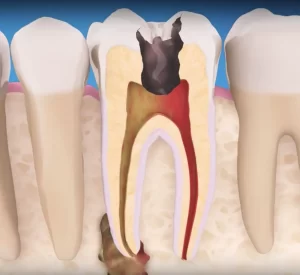
Based on their findings, the dentist will recommend an appropriate course of action. This may involve draining the abscess, prescribing antibiotics, or performing a root canal procedure to save the tooth. In severe cases, the tooth may need to be extracted to prevent the infection from spreading to other teeth or the surrounding tissues.
3. Practice Good Oral Hygiene
Keeping Your Mouth Clean
Maintaining good oral hygiene is crucial for preventing and managing dental infections. Follow these steps to keep your mouth clean:
Brush your teeth twice a day: Use a fluoride toothpaste and a soft-bristled toothbrush to clean your teeth thoroughly.
Floss daily: Flossing helps remove plaque and food particles from between your teeth and along the gumline.
Use an antimicrobial mouthwash: Rinse your mouth with an antimicrobial mouthwash to reduce bacteria.
Replace your toothbrush regularly: Replace your toothbrush every three to four months or sooner if the bristles become frayed.
By practicing good oral hygiene, you can minimize the risk of dental infections and promote overall oral health.
4. Take Prescribed Medications
Following Your Dentist’s Advice
If your dentist prescribes antibiotics to treat the tooth infection, it’s crucial to take them as directed. Follow the recommended dosage and complete the full course of antibiotics, even if you start feeling better. Failure to finish the prescribed antibiotics could lead to antibiotic resistance and a resurgence of the infection.
In addition to antibiotics, your dentist may recommend over-the-counter pain relievers to manage the pain and reduce inflammation. Always consult your dentist or pharmacist before taking any medications to ensure they are safe for you.
5. Avoid Triggers
Watch What You Eat and Drink
Certain foods and habits can exacerbate a tooth infection or delay healing. Here are some tips to avoid triggers:
Limit sugary foods and beverages: Sugar feeds harmful bacteria in the mouth, promoting infection.
Avoid extreme temperatures: Steer clear of very hot or cold foods and drinks, as they can aggravate sensitivity.
Don’t chew on the affected side: Avoid putting unnecessary pressure on the infected tooth while chewing.
By being mindful of what you eat and drink and avoiding harmful habits, you can support the healing process and prevent further irritation to the infected tooth.
6. Follow Up with Your Dentist
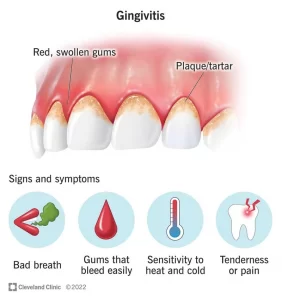
Importance of Post-Treatment Care
After receiving dental treatment for the tooth infection, it’s essential to follow up with your dentist as scheduled. Regular check-ups allow the dentist to monitor your progress, ensure the infection is fully resolved, and address any concerns you may have. Following up also gives your dentist the opportunity to evaluate the success of any dental procedures performed to address the infection. For help with a tooth infection find us here.
Conclusion
Regaining Your Dental Health
Dealing with a tooth infection can be distressing, but with prompt dental care and good oral hygiene, you can effectively get rid of the infection and prevent it from returning. Remember to identify the symptoms early, seek professional dental care, maintain good oral hygiene, and follow your dentist’s advice throughout the treatment process. By doing so, you can regain your dental health and enjoy a pain-free smile once again.
Remember, if you suspect you have a tooth infection or any dental concern, consult your dentist immediately for appropriate diagnosis and treatment.
